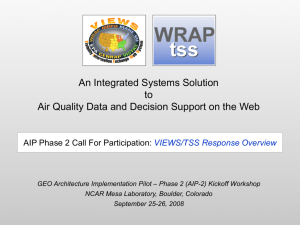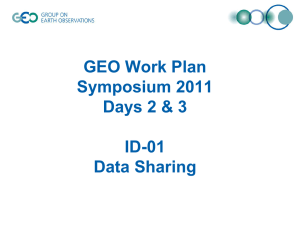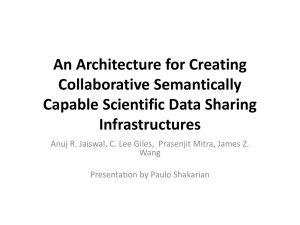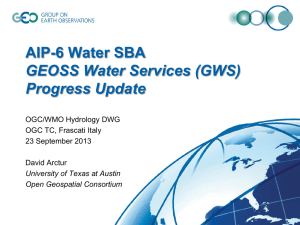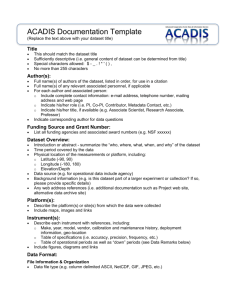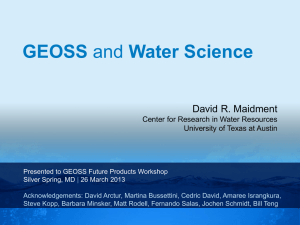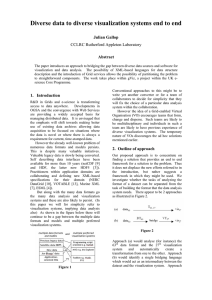Data Quality in Geospatial Information: INSPIRE & GeoViQua
advertisement
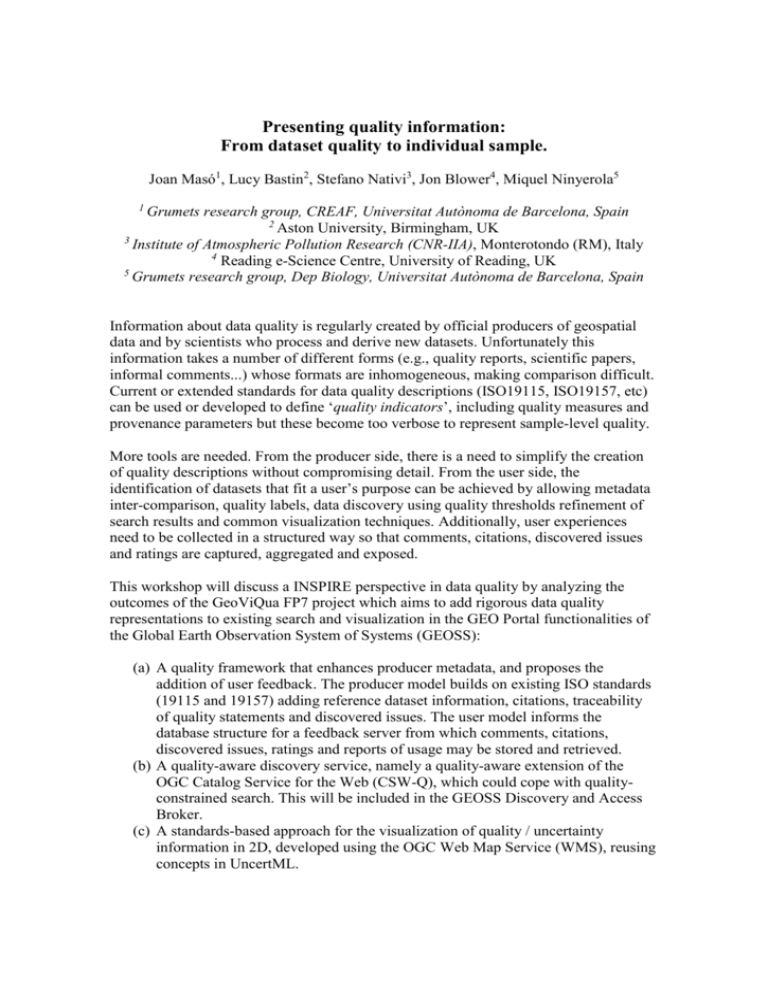
Presenting quality information: From dataset quality to individual sample. Joan Masó1, Lucy Bastin2, Stefano Nativi3, Jon Blower4, Miquel Ninyerola5 1 Grumets research group, CREAF, Universitat Autònoma de Barcelona, Spain 2 Aston University, Birmingham, UK 3 Institute of Atmospheric Pollution Research (CNR-IIA), Monterotondo (RM), Italy 4 Reading e-Science Centre, University of Reading, UK 5 Grumets research group, Dep Biology, Universitat Autònoma de Barcelona, Spain Information about data quality is regularly created by official producers of geospatial data and by scientists who process and derive new datasets. Unfortunately this information takes a number of different forms (e.g., quality reports, scientific papers, informal comments...) whose formats are inhomogeneous, making comparison difficult. Current or extended standards for data quality descriptions (ISO19115, ISO19157, etc) can be used or developed to define ‘quality indicators’, including quality measures and provenance parameters but these become too verbose to represent sample-level quality. More tools are needed. From the producer side, there is a need to simplify the creation of quality descriptions without compromising detail. From the user side, the identification of datasets that fit a user’s purpose can be achieved by allowing metadata inter-comparison, quality labels, data discovery using quality thresholds refinement of search results and common visualization techniques. Additionally, user experiences need to be collected in a structured way so that comments, citations, discovered issues and ratings are captured, aggregated and exposed. This workshop will discuss a INSPIRE perspective in data quality by analyzing the outcomes of the GeoViQua FP7 project which aims to add rigorous data quality representations to existing search and visualization in the GEO Portal functionalities of the Global Earth Observation System of Systems (GEOSS): (a) A quality framework that enhances producer metadata, and proposes the addition of user feedback. The producer model builds on existing ISO standards (19115 and 19157) adding reference dataset information, citations, traceability of quality statements and discovered issues. The user model informs the database structure for a feedback server from which comments, citations, discovered issues, ratings and reports of usage may be stored and retrieved. (b) A quality-aware discovery service, namely a quality-aware extension of the OGC Catalog Service for the Web (CSW-Q), which could cope with qualityconstrained search. This will be included in the GEOSS Discovery and Access Broker. (c) A standards-based approach for the visualization of quality / uncertainty information in 2D, developed using the OGC Web Map Service (WMS), reusing concepts in UncertML. (d) A GEO Label as a graphical representation of a dataset in the GEOSS (or other data portals and clearinghouses) based on the quality information that is available for that dataset. (e) A user feedback catalogue where users can introduce comments, citations, discovered issues, ratings and reports of usage. This information can then be retrieved by the Discovery and Access Broker. (f) Some enhancements in metadata presentation such as: metadata side by side comparison; rubric metadata completeness assessment; provenance visualization, etc. Conclusions of the workshop will serve to improve quality descriptions in both the INSPIRE and GEOSS initiatives.

